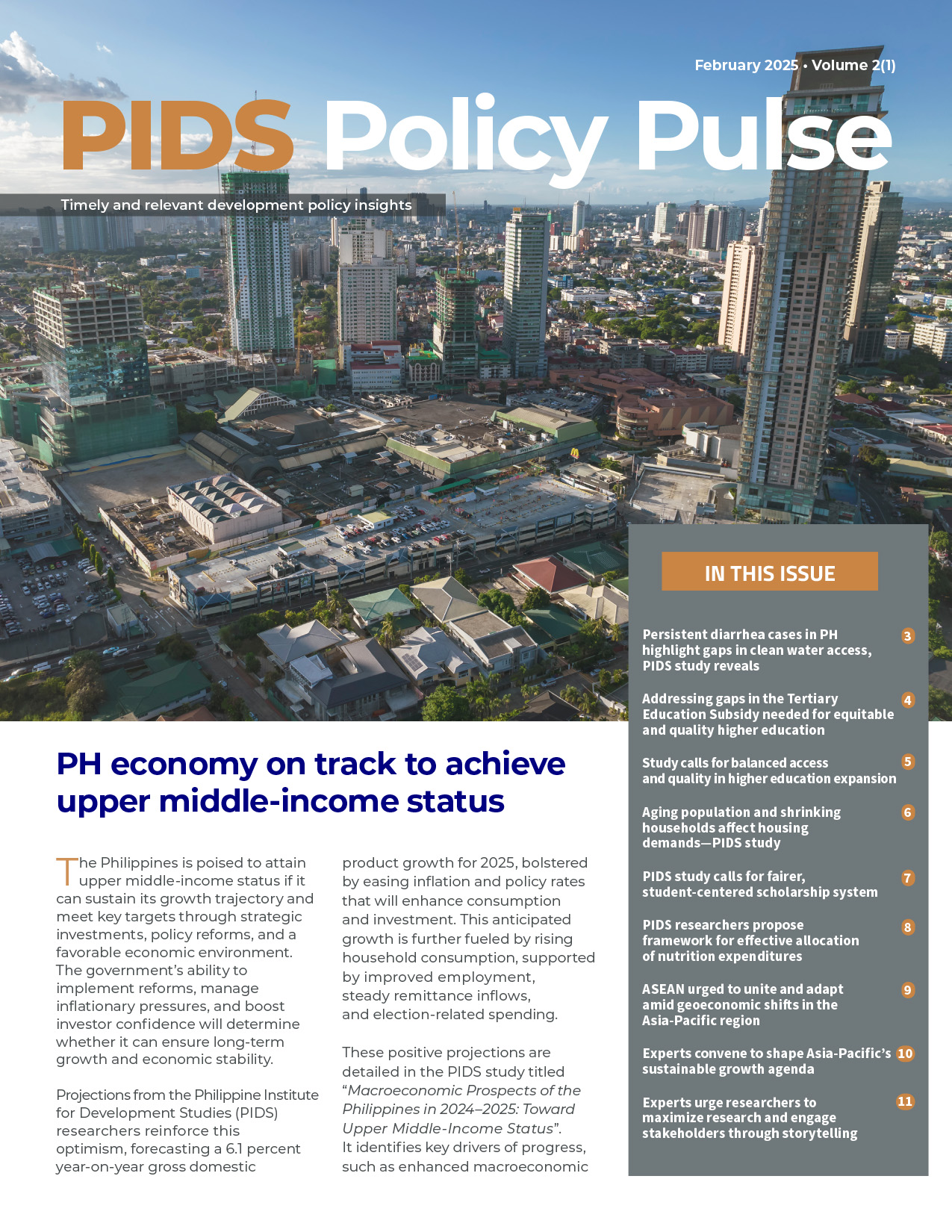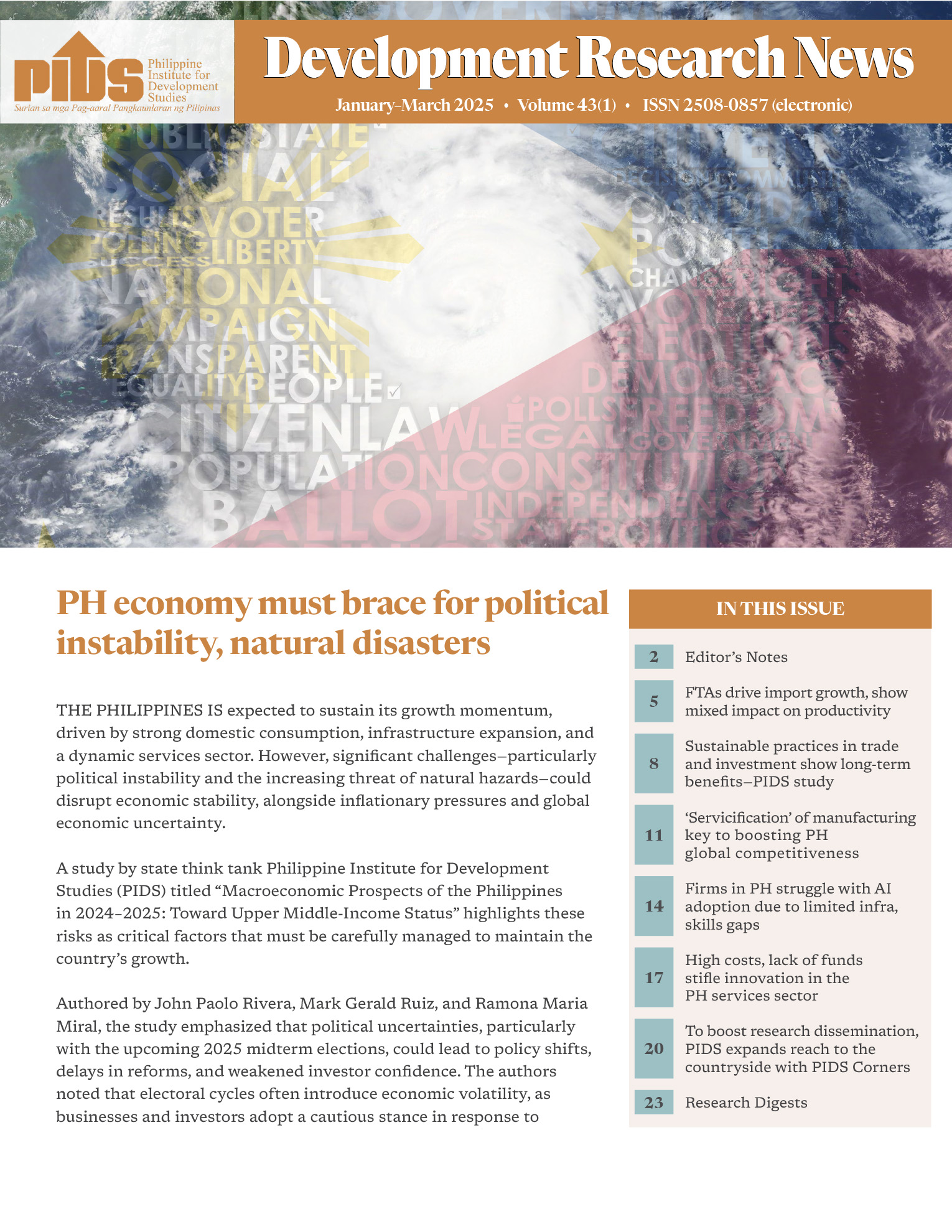MANILA, Philippines — Despite global economic challenges, the Philippine economy is expected to expand at a faster pace this year than in 2023, according to state think tank Philippine Institute for Development Studies (PIDS).
“GDP (gross domestic product) will likely grow between 5.5 to six percent in 2024,” PIDS research fellow Margarita Debuque-Gonzales along with research analysts Mark Gerald Ruiz and Ramona Maria Miral said in a study titled, “Macroeconomic Outlook of the Philippines in 2023-2024: Prospects and Perils.”
This year’s growth forecast is higher than the authors’ projected 5.2 percent growth in 2023.
If realized, both forecasts would fall below the government’s growth targets for this year and last year.
In particular, the government is aiming for 6.5 to 7.5 percent growth for this year, narrowed from its previous target of 6.5 to eight percent, amid challenges such as the impact of El Niño as well as external price pressures from geopolitical tensions.
Last year, the government’s growth goal was at six to seven percent.
In the third quarter of 2023, the economy grew by 5.9 percent, bringing growth in the January to September period to 5.5 percent.
While the authors continue to anticipate global economic challenges such as inflation and economic uncertainty, they see the Philippine economy poised for continued progress this year.
“Consumption may still support growth despite weak global economic prospects, given the steady flow of remittances from abroad; increased wages, which may partially offset lost purchasing power; and an improved jobs picture, with an increase in wage and salary employees,” the authors said.
Macro conditions are also expected to further improve with declining inflation and some credit easing.
The authors expect inflation to fall to three percent this year, within the government’s two to four percent target range.
Inflation averaged six percent last year, higher than the 5.8 percent in 2022.
Despite faster growth expected for this year, the authors cited possible sources of uncertainty that deserve attention such as risks related to inflation, the country’s fiscal position and the newly created Maharlika Investment Fund (MIF).
“As inflation threats remain, we continue to propose high-frequency monitoring and a calibrated response to price developments that carefully consider the nature of shocks, estimated pass-throughs, and policy lags to ensure that monetary decisions are always well-timed,” the authors said.
They also cautioned against policies that have unintended costly consequences including the imposition of price controls and other untargeted measures.
“We urge the government to make use of every weapon in the arsenal to control inflation, particularly those that work through the supply side, such as easing import restrictions on agriculture products that may face shortages and instituting a better system for anticipating and addressing these shortages,” the authors said.
On fiscal risks, the PIDS cited the need for clarity on additional revenues expected from legislative measures and the timing of deficit-reducing measures.
“Having a sound and credible plan remains critical in shaping market perceptions about the country’s debt limits and hence essential to keeping financing costs down,” the PIDS said.
To build the MIF’s credibility, the authors emphasized the importance of having a truly independent board and professional management team to ensure good governance, minimize the risk of political interference, and make sure the goals of the fund are met.
“Anything less would place the fund at a disadvantage,” they said.












